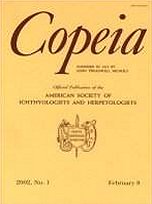Despite wide variation in form and function of vertebrate feeding strategies, convergent acquisitions of functionally analogous systems are seen across taxa, often driven by the medium (air or water) in which the animal lives. As the majority of fish rely on suction for aquatic prey capture, tetrapods that exhibit this mode prove especially valuable for functional morphological analysis of vertebrate response to medium constraints. The dwarf African clawed frog, Hymenochirus boettgeri, is unique among anurans as an inertial suction feeder. High-speed video recordings indicate that kinematic variables of food capture always proceed in a rostrocaudal sequence, as is conserved among suction-feeding vertebrates. However, maximum hyoid depression differs from most vertebrates studied in that it follows (rather than precedes) mouth closure. Suction events are preceded by a body lunge toward the food item and followed by recoil of the body with lateral spreading of the forelimbs. It is proposed that the abducted forelimbs decelerate the frog's capture lunges and delayed hyoid depression acts to prolong a caudal flow of water to effectively entrain prey.
How to translate text using browser tools
1 December 2003
Suction Feeding in the Pipid Frog, Hymenochirus boettgeri: Kinematic and Behavioral Considerations
Mason N. Dean
ACCESS THE FULL ARTICLE





